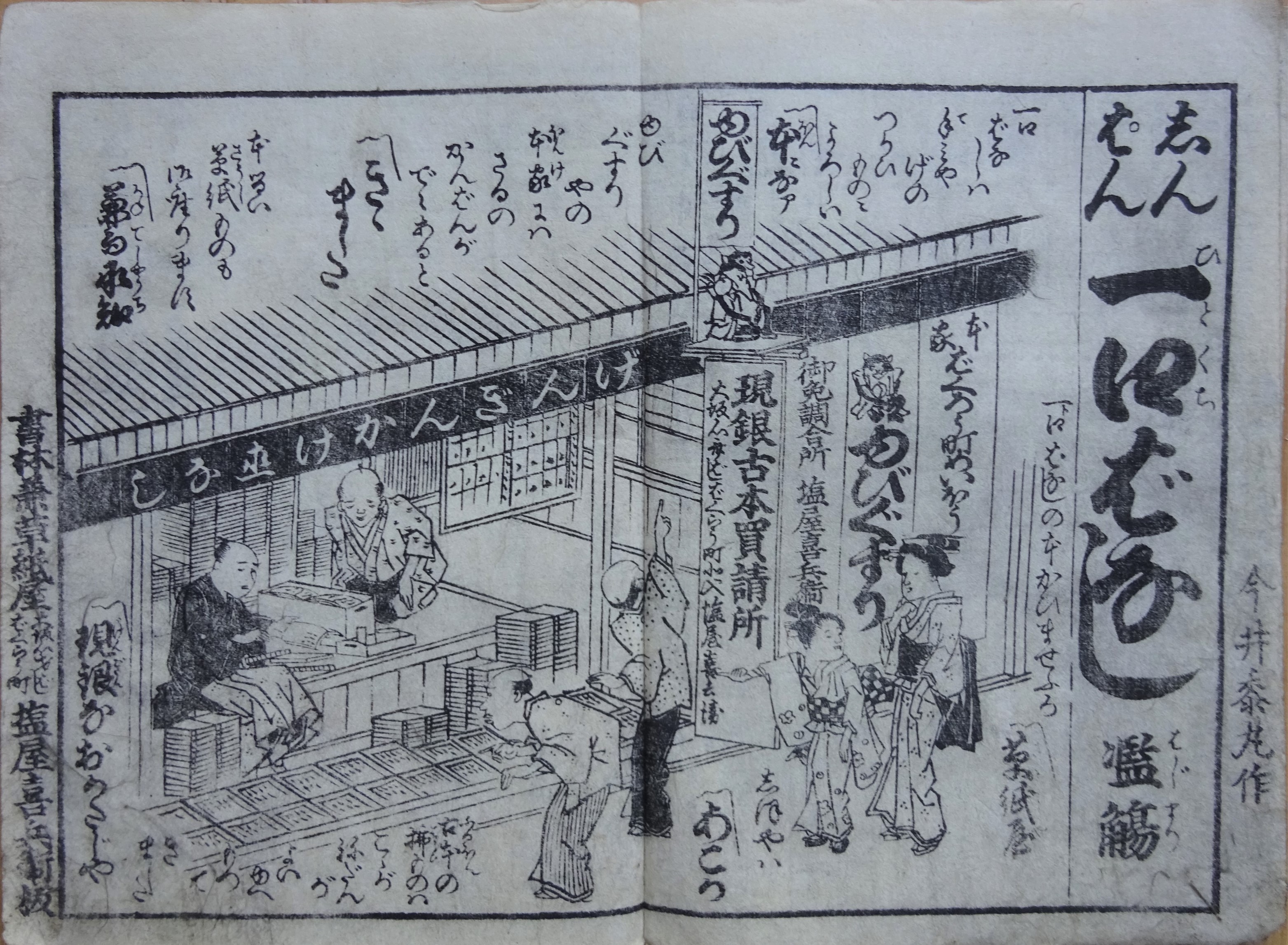
As part of the massive-scale production of commercial publications, early-modern Japan witnessed the flourishing of a variety of ephemera. Around the 1830s Osaka became the hotbed for the production of the so-called kobanzuke小番付, small-size single-sheet prints that display a plethora of contents and page-layouts. From ranking charts to riddles, from abridged versions of popular literary works to snippets of practical knowledge, from easily digestible teachings to humorous parodies, the world displayed in these materials is truly multifarious. Shioya Kihei, Kawachiya Heishichi and Wataya Kihei are key-figures in the production and distribution of these cheap materials, often selling them as Souvenirs of Osaka (Naniwa miyage 浪花みやげ). While kobanzuke proved extremely popular up to the beginning of the twentieth century, virtually nothing is known about them. This research project reconstructs the extremely complex publishing history of these materials, while mapping the contents and understanding the cultural significance of these ephemera.
The project started thanks to the generous support of a British Academy/Leverhulme Small Research Grant. This allowed Dr Moretti to retrace an impressive number of extant copies of Naniwa miyage across a number of public and private collections in Japan. Moreover, she has been able to secure other funds to purchase some of the copies that still appear on the antiquarian market. As part of the grant, Dr Elena Follador (at the time PhD student supervised by Dr Moretti) transcribed and translated a selection of these materials.
The project has undergone the following steps so far:
Abstract
By the 1840s and after two centuries of exciting developments, commercial publishing in early modern Japan had reached full maturity. Over the span of ten years (1842-1854) Osaka publisher and bookseller Shioya Kihee delighted readers by issuing hundreds of small-size prints that packaged all sort of materials: ranking charts, riddles, humorous poems, mini guides for a healthy household, parodic twists on theatrical hits, and much more. The charm of these materials resides not only in the amorphous body of knowledge and entertainment that they unlock, but crucially in their fluid nature that sits at the intersection of ephemera and books: these single sheet prints were sold both as stand-alone items and as books under the collective title of Naniwa miyage (Souvenirs from Osaka).
This paper unravels the complex publishing history of Naniwa miyage, exploring how its contents migrated across time and space. First, I will investigate how Shioya Kihee cannibalized three popular books and displaced their contents to create easily digestible, discrete textual entities. Second, I will explore how Shioya Kihee’s Naniwa miyage migrated into the hands of two other Osaka publishers—Kawachiya Heishichi and Wataya Kihee. I will focus on how the latter transformed Shioya Kihee’s materials into the collection titled Tanoshimi sōshi (A booklet of delights), which recycles some contents and adds others. I will also reflect upon how Tanoshimi sōshi was ferried into modern Japan, just to be further moulded into something similar and yet different. Finally, I will examine instances of how readers selected single sheet prints to create their own books, working in a way somewhat reminiscent of commonplacing. Overall, this paper problematizes any easy distinction between ephemera and books, asking us to think about hybrid publishing products that circulated widely in nineteenth-century Japan.
Video of the presentation (from 28:12)
